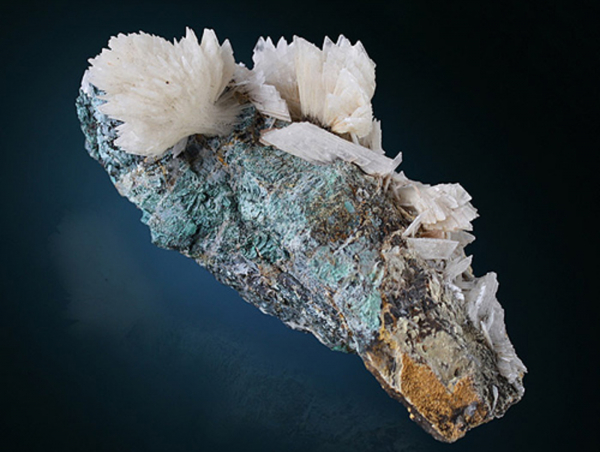Cavnic Mine (Kapnikbánya), Cavnic, Maramureș, Romania
CaSO4.2H2O
Crystal System: monoclinic
Colour: colourless to white
Lustre: vitreous, sub-vitreous, silky, pearly, dull
Habitus: tabular, acicular, columnar or prismatic.Twinning is common by contact on {100}, forming V-shaped crystals.
Hardness: 2
Fracture: splintery, conchoidal
Cleavage: perfect and easy on {010}, almost micaceous in some samples; distinct on {100}, yielding a surface with a conchoidal fracture; distinct on {011}, yielding a fibrous fracture
Density: 2.308 g/cm3
Origin and geological occurrence: it is the most common sulfate mineral. Gypsum has been found in sedimentary rocks, particularly marine salt deposits, and soils formed directly by evaporation or later by hydration of anhydrite. It is formed by the reaction between sulfuric acid and carbonate rock in oxidizing sulfide deposits and by the action of sulfurous volcanic gases on surrounding Ca-bearing rock. It may also occur as efflorescences in mines and speleothems in caves.
Samples:










